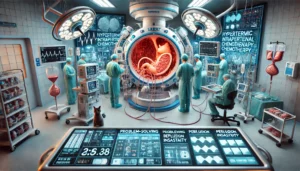
Innominate Artery Graft Cannulation for Selective Antegrade Cerebral Perfusion in Aortic Surgery: Clinical Findings and Feasibility
This retrospective study evaluates the safety and efficacy of innominate artery (IA) graft cannulation for selective antegrade cerebral perfusion (SACP) in aortic surgery. Analyzing 196 patients, including those with Type A acute aortic dissection and Marfan syndrome, the results showed low rates of stroke (2.04%), mortality (3.06%), and acute renal failure (3.06%). IA graft cannulation emerged as a reliable and efficient technique for cerebral protection during complex aortic procedures.










